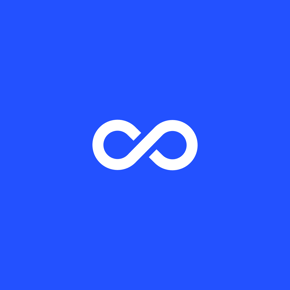There is a lot of talk about CTAs in the UX and marketing industry. If you're running a website, online store or advertising campaign, call to action is an element without which it's hard to succeed. But what does CTA actually mean? Is it just about a button that says "Buy now"?
Table of Contents
- What is a CTA? (Call to Action)
- What are the types of CTAs?
- Where is it best to place a CTA to make it effective?
- How to create an effective CTA?
- Examples of CTA buttons that work
- Why is it important to use CTAs?
What is a CTA? (Call to Action)
CTA is an abbreviation for call to action, which literally means " callto action". It is an element that is intended to induce the recipient to perform a specific action. It could be clicking on a link, signing up for a newsletter, adding a product to a shopping cart - any goal that brings your campaign closer to success.
The simplest example of a CTA is the popular "Order Now!" button.
A CTA can take a variety of forms, from short but specific text to a graphic banner. The important thing is that it always has to lead to a specific and single goal: conversion, engagement, purchase.
Explore our offerings on: Customer Lifecycle Management.
What are the types of CTAs?
A call to action is most often encountered in the form of a "CTA button," but it can take many different forms. It all depends on the context and communication channel.
The most common forms of CTA:
- CTAbutton / button - for example, "Add to cart", "Call".
- Text link - often found in blog content: "Check our offer".
- Graphic banner - used on the homepage or in advertising campaigns
- Pop-up / exit intent - CTA appearing in the form of a window, before the user leaves the site
- Email marketing - usually in the first part, visible immediately after opening the message: "Receive your discount".
- Social media - the CTA is also present on Facebook and Instagram: "Share with friends".
CTAs can also appear in the meta description of the page, in contact forms or in push messages.
Where is the best place to place CTAs to make them effective?
The location of a CTA is important for effectiveness. Even the best text won't work if the recipient doesn't notice it. A call to action is like an impulse - it needs to be visible, emphatic and prompt the user to make a move.
The most common places to place CTAs:
- Above the fold - in a visible part of the page without scrolling, such as on the homepage or landing page.
- Below the article content - ideal for converting blog readers. The content of the post elicits intent, and the call to action encourages them to take action.
- In the sidebar or sticky bar - with this solution, the CTA accompanies the user while scrolling and is present when the customer is ripe to make a move.
- In email headers and footers - these strategic places in the email increase the chance of a response.
- At the end of the video / presentation - similar to blog posts, it appears as a prompt for further action.
A well-placed CTA should be a logical continuation of the content and fit into the natural flow of the user' s interaction with the site.
Check out the email personalization offer from Persooa - communication that gets results.
How to create an effective CTA?
Not every call to action will work. For a CTA to be truly effective, you should pay attention to the content of the button. It should use verbs that clearly indicate the effect of clicking on our button. Avoid generalities; lack of specifics is not encouraging. The CTA button should also be highly visible - distinguishable in color and shape from the rest of the page. It's a good idea to use contrasts, consistent with the visual identity, yet catching the eye. Your call to action, to be most effective, should be like an invitation, clearly indicating the benefit to the user if he or she decides to take action.
Examples of CTA buttons that work
You already know what a properly constructed call to action button should contain. Here are some examples that work in practice:
|
Context |
CTA example |
|
Landing page |
"Try it for free for 14 days". |
|
Newsletter |
"Sign up and receive 10% discount". |
|
E-commerce |
"Add to cart" |
|
Blog |
"Read more: How to increase conversions?" |
|
Pop-up |
"Don't walk away! Get the e-book for £0" |
Why use CTAs?
CTA is one of the most important elements of online communication. A properly designed call to action can significantly increase your conversion rate, user engagement and the effectiveness of your advertising campaigns. A CTA is a clear message that structures the user's experience, guiding them "by the hand" through the stages of the sales funnel.






.jpg?width=300&name=Frame%204728%20(1).jpg)
